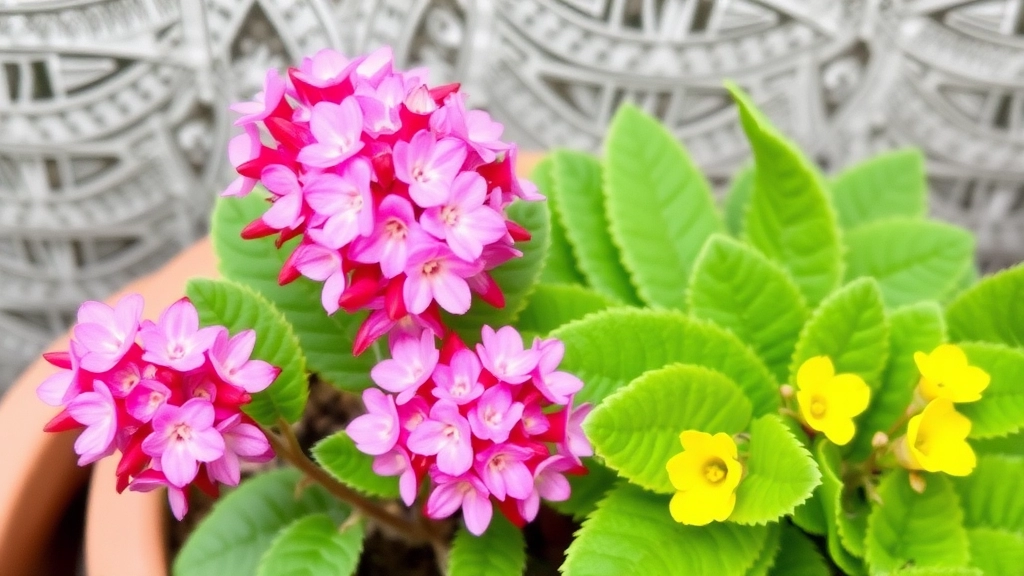Looking for Kalanchoe Seeds for Sale?
You’re in the right place! Whether you’re a seasoned gardener or just starting out, finding the best sources for Kalanchoe seeds online can make all the difference. From Amazon to specialized stores like Succulents Box, there’s a variety of options to suit your needs and budget.
Choosing Kalanchoe Seeds
When choosing Kalanchoe seeds, it’s essential to know which varieties are best for your garden. High-quality seeds ensure a successful growing experience, so let’s dive into where to buy them, how to plant them, and tips for nurturing these beautiful plants.
Ready to Get Started?
Let’s explore the world of Kalanchoe seeds together!
When you’re ready to embark on your journey of growing Kalanchoe from seeds, the first question that often arises is where to find high-quality seeds. With so many options available, it can be overwhelming to choose the right supplier.
1. Specialty Gardening Websites
– Websites like **Seedaholic** and **Thompson & Morgan** offer a variety of Kalanchoe seeds.
– They often provide detailed descriptions and growing tips.
2. E-commerce Platforms
– **Amazon** and **eBay** have a wide selection of Kalanchoe seeds.
– Look for sellers with high ratings and positive customer reviews.
3. Local Nurseries with Online Stores
– Many local nurseries now have online shopping options.
– Supporting local businesses can lead to fresher seeds and better advice.
4. Specialized Seed Banks
– Websites like **RareSeeds** and **Baker Creek Heirloom Seeds** focus on unique and rare varieties.
– These can be a great choice if you’re looking for something special.
5. Gardening Forums and Community Groups
– Online communities often share trusted sources for seeds.
– Platforms like **Reddit** or **Facebook Groups** can be invaluable for recommendations.
For those interested in specific Kalanchoe varieties, you might want to check out the [complete guide to Kalanchoe plant care](https://planthq.org/complete-guide-to-kalanchoe-plant-care/) or learn more about the [care and propagation of Kalanchoe Delagoensis Tubiflora](https://planthq.org/care-and-propagation-of-kalanchoe-delagoensis-tubiflora/). These resources offer detailed information to help your Kalanchoe thrive.
Popular Varieties of Kalanchoe Seeds
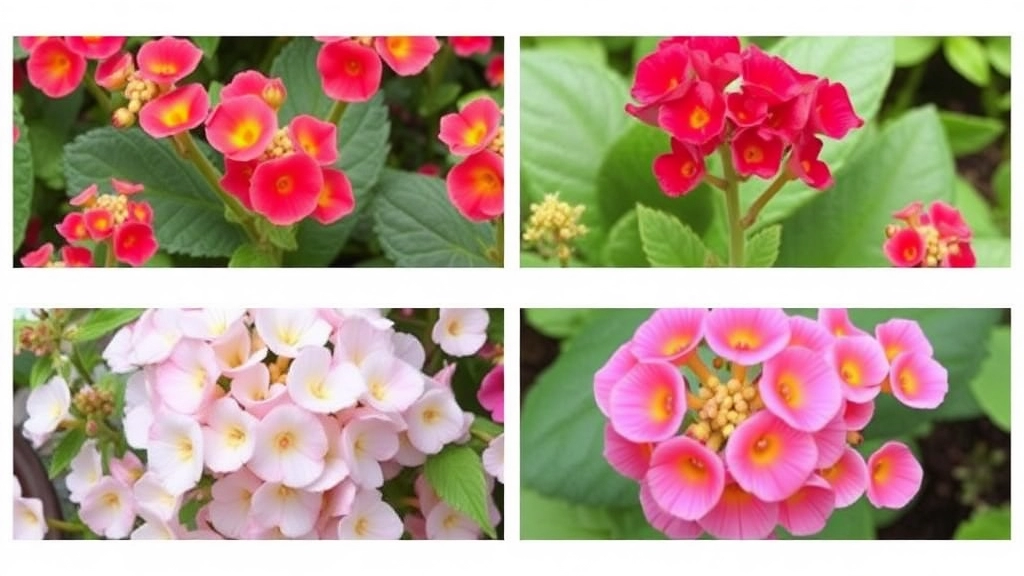
So, you’re diving into the world of Kalanchoe seeds, huh?
You’re in for a treat!
These plants come in a variety of types, each with its own unique charm and characteristics.
Here are some popular Kalanchoe varieties you might want to consider:
1. Kalanchoe Blossfeldiana
- Description: Known for its vibrant, clustered blooms.
- Features: Comes in various colours, including pink, red, yellow, and white.
- Ideal For: Beginners, as it’s quite forgiving.
2. Kalanchoe Tomentosa (Panda Plant)
- Description: Features fuzzy, grey-green leaves with brown edges.
- Features: Its unique appearance makes it a conversation starter.
- Ideal For: Those looking for a quirky addition to their collection.
3. Kalanchoe Luciae (Flapjack)
- Description: Known for its large, flat leaves that resemble pancakes.
- Features: Leaves turn a stunning red in bright sunlight.
- Ideal For: Sunny spots in your home or garden.
4. Kalanchoe Fedtschenkoi (Chandelier Plant)
- Description: Has long, trailing stems with small, scalloped leaves.
- Features: Produces beautiful clusters of pink flowers.
- Ideal For: Hanging baskets or as a trailing plant.
5. Kalanchoe Pinnata (Mother of Thousands)
- Description: Known for its ability to produce tiny plantlets along its edges.
- Features: An interesting propagation method!
- Ideal For: Those who love to share plants with friends.
When selecting high-quality Kalanchoe seeds, it’s important to consider several factors to ensure a thriving plant. You might wonder, “How can I tell if the seeds I’m buying are worth my time and effort?”
Here are some key factors to consider:
– **Source Reputation**: Buy from reputable sellers or well-known nurseries. Check reviews and ratings to ensure you’re getting seeds from a trusted source.
– **Seed Viability**: Look for seeds that have a high germination rate. This information is often provided on the packaging. Aim for seeds with at least a 70% germination rate.
– **Freshness**: Seeds lose viability over time. Check the packaging date and choose the freshest seeds available. Ideally, seeds should be less than a year old.
– **Variety Information**: Ensure the seeds are clearly labelled with the specific Kalanchoe variety. Each type may have different growth habits and care requirements.
– **Organic Options**: If you prefer to grow your plants naturally, opt for organic seeds. These are free from synthetic pesticides and fertilizers.
– **Seed Size and Appearance**: Quality seeds should be plump and free from blemishes. Avoid seeds that look shriveled or discoloured.
By keeping these points in mind, you can confidently select seeds that will lead to healthy and vibrant Kalanchoe plants. For more detailed guidance on growing Kalanchoe, check out our [complete guide to growing Kalanchoe Mother of Thousands](https://planthq.org/complete-guide-to-growing-kalanchoe-mother-of-thousands/) and if you’re interested in propagation methods, our [step-by-step guide to propagating Kalanchoe in water](https://planthq.org/how-to-propagate-kalanchoe-in-water-stepbystep-guide/) can be very helpful.
Growing Kalanchoe from Seeds: A Step-by-Step Guide
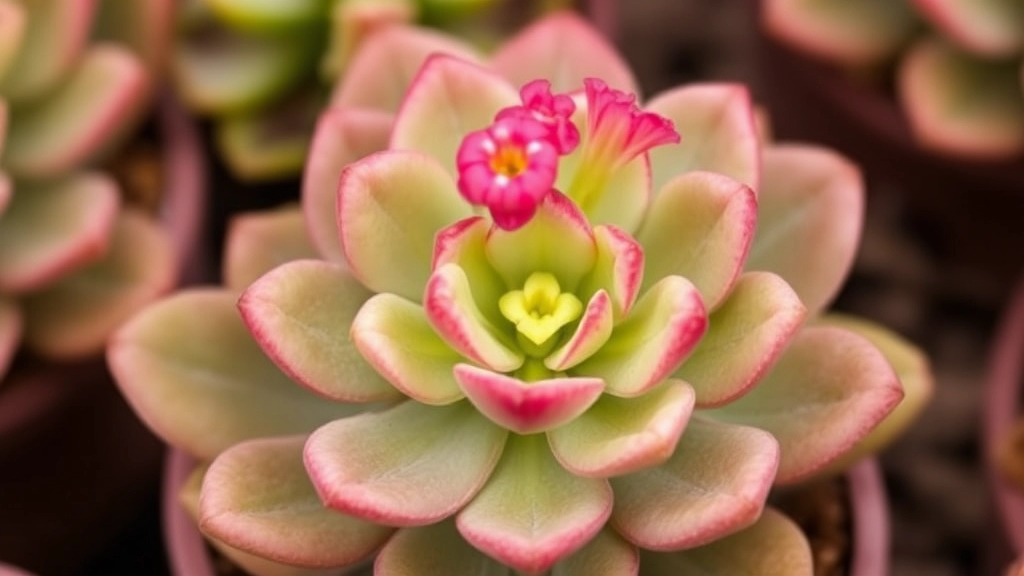
Many gardening enthusiasts wonder how to successfully grow Kalanchoe from seeds, especially given the challenges associated with seed germination.
Step 1: Gather Your Materials
Before diving into the planting process, ensure you have the following items ready:
- Kalanchoe seeds: Choose high-quality seeds from reputable sources.
- Seed trays or pots: Opt for shallow containers with drainage holes.
- Seed compost: Use a well-draining mix, ideally formulated for seed starting.
- Watering can or spray bottle: For gentle watering.
- Plastic cover or cling film: To maintain humidity during germination.
Step 2: Prepare the Seed Compost
Fill your seed trays or pots with the seed compost.
- Tip: Lightly moisten the compost before planting the seeds to ensure they have the right moisture level.
Step 3: Plant the Seeds
Sprinkle the Kalanchoe seeds evenly over the surface of the compost.
- Do not bury them: These seeds require light to germinate, so simply press them down gently.
Step 4: Create a Humid Environment
Cover the trays with plastic wrap or a clear lid to retain moisture.
- Important: Place the trays in a warm location, ideally between 20-25°C (68-77°F).
Step 5: Watering
Check the moisture level regularly.
- Use a spray bottle: This prevents overwatering and helps keep the soil lightly moist.
Step 6: Monitor Germination
Germination can take anywhere from 7 to 14 days.
- Remove the cover: Once you see the seedlings sprouting, to allow for airflow and prevent mould.
Step 7: Transplanting
Once the seedlings have developed a few sets of true leaves, it’s time to transplant them into larger pots.
- Handle with care: Use a small tool or your fingers to gently lift them out.
Ideal Conditions for Germinating Kalanchoe Seeds
When embarking on the journey of germinating Kalanchoe seeds, you might wonder: What conditions do these seeds thrive in? Understanding the ideal environment is crucial for successful germination.
Common Issues and Solutions When Growing Kalanchoe from Seeds
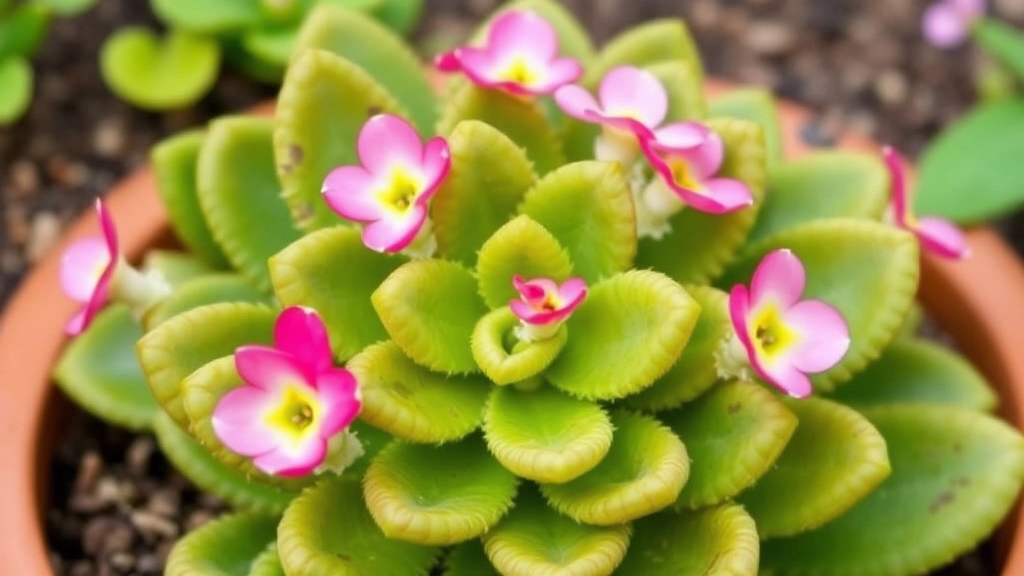
So, you’ve decided to grow Kalanchoe from seeds—exciting times ahead! But, let’s face it, things don’t always go as planned. You might be wondering why your seedlings are struggling or why they haven’t sprouted at all.
Common Issues
- Poor Germination Rates
- Seeds may not sprout due to age or poor storage.
- Ensure you’re using fresh seeds.
- Leggy Seedlings
- This usually happens when they don’t get enough light.
- Move them to a brighter spot or use grow lights.
- Damping Off
- A fungal issue that can kill young seedlings.
- Good air circulation and proper watering can help prevent this.
- Overwatering
- Kalanchoe loves well-draining soil.
- Always check the moisture level before watering.
- Pests
- Watch out for aphids and mealybugs.
- Regularly inspect your plants and treat any infestations promptly.
Solutions
- For Poor Germination Rates
- Buy seeds from reputable online sources.
- Store seeds in a cool, dry place.
- For Leggy Seedlings
- Rotate your trays to ensure even light exposure.
- Consider using a grow light if natural light is insufficient.
- To Combat Damping Off
- Use sterilized soil and pots.
- Water from the bottom to keep the soil moist but not soggy.
- For Overwatering
- Use pots with drainage holes.
- Let the soil dry out between waterings.
- To Manage Pests
- Introduce beneficial insects like ladybugs.
- Use insecticidal soap for treatment.
Benefits of Growing Kalanchoe from Seeds Compared to Cuttings
When considering the best methods for propagating Kalanchoe, many gardeners often find themselves torn between seeds and cuttings.
Seasonal Tips for Kalanchoe Seed Growth
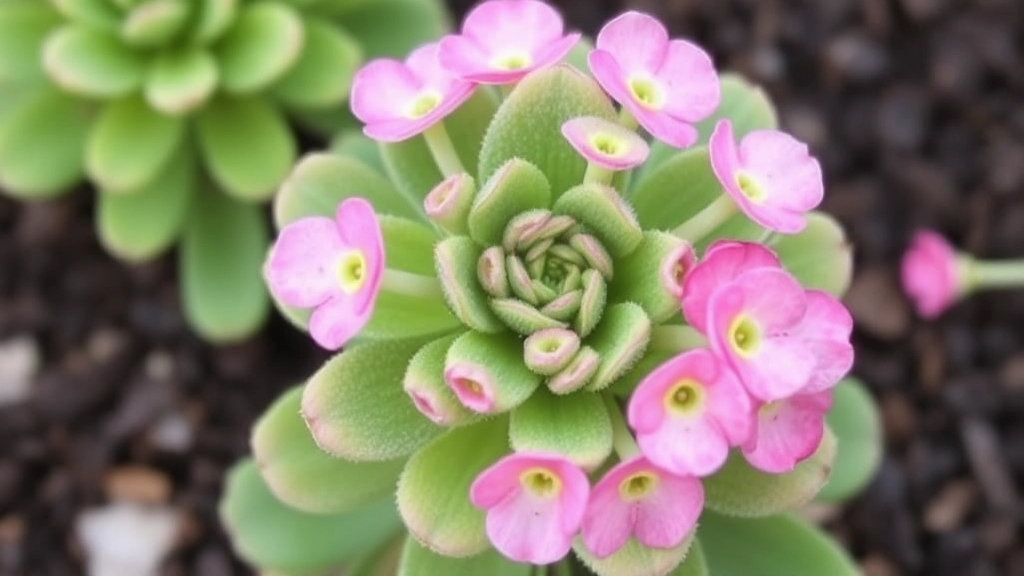
So, you’ve decided to grow Kalanchoe from seeds—great choice! But did you know that the season can make a big difference in your success? Let’s dive into some seasonal tips to help your Kalanchoe thrive.
Spring: The Perfect Time to Start
- Timing is Key: Spring is ideal for sowing Kalanchoe seeds. The warmer temperatures and longer days help kickstart germination.
- Soil Preparation: Use a well-draining mix. A blend of potting soil and sand works wonders.
- Light Exposure: Ensure your seeds get plenty of indirect sunlight. A south-facing window is perfect.
Summer: Nurturing Growth
- Water Wisely: As temperatures rise, keep the soil moist but not soggy. Overwatering can lead to root rot.
- Fertilize: Use a diluted liquid fertilizer every couple of weeks to give your plants a nutrient boost.
- Pest Watch: Keep an eye out for pests like aphids. A gentle spray of water can help keep them at bay.
Autumn: Preparing for Dormancy
- Reduce Watering: As days get shorter, cut back on watering. Kalanchoe likes to dry out a bit.
- Temperature Check: Keep them in a warmer spot as nights get chilly. A consistent temperature helps them settle down.
- Pruning: Trim any dead leaves to promote healthy growth next season.
Winter: Rest and Recharge
- Minimal Care: Kalanchoe goes dormant in winter. Water sparingly and avoid fertilizing.
- Light Needs: If possible, provide some artificial light to keep them from getting too leggy.
- Temperature Stability: Avoid drafts and sudden temperature changes. They prefer a cozy environment.
Rare and Unique Kalanchoe Seed Varieties
When exploring the world of Kalanchoe, you might wonder about the rare and unique seed varieties that can elevate your gardening experience.
Why Consider Rare Varieties?
Rare Kalanchoe varieties not only add diversity to your collection but also showcase stunning blooms and foliage that can be conversation starters. Here are some noteworthy options:
How to Harvest and Store Kalanchoe Seeds
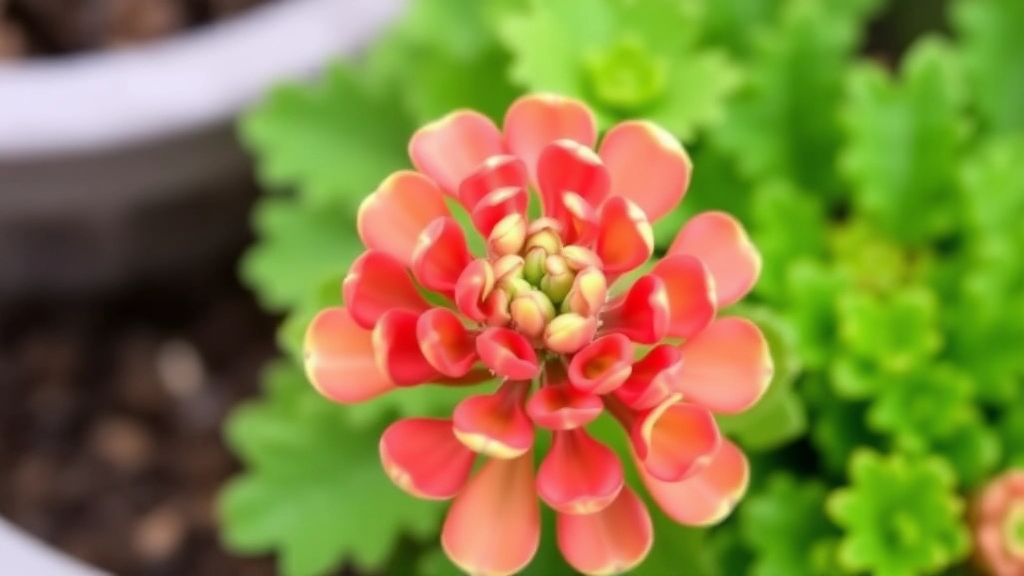
So, you’ve successfully grown your Kalanchoe and now you’re wondering how to harvest and store those precious seeds.
It’s a common concern—what’s the best way to ensure your seeds are viable for future planting?
Here’s the scoop:
Harvesting Kalanchoe Seeds
- Timing is Key:
- Wait until the flowers have faded and the seed pods are dry.
- This usually happens a few weeks after the blooming period.
- Check the Pods:
- The seed pods should be brown and brittle.
- If they start to split, it’s time to act!
- Gathering Seeds:
- Gently twist or cut the seed pods from the plant.
- Place them in a paper bag or a container to catch any falling seeds.
- Let Them Dry:
- Leave the pods in a dry, warm place for a few days.
- This ensures that any remaining moisture evaporates.
Storing Kalanchoe Seeds
- Choose the Right Container:
- Use a small, airtight container or a paper envelope.
- Avoid plastic bags, as they can trap moisture.
- Label Everything:
- Write the date and variety on the container.
- This helps keep track of your seeds for future planting.
- Find a Cool, Dark Place:
- Store your seeds in a cupboard or drawer.
- A consistent temperature is crucial for maintaining seed viability.
- Check Periodically:
- Every few months, check your seeds for any signs of moisture or mold.
- If you notice any issues, it might be time to toss them.
When embarking on the journey of growing Kalanchoe from seeds, having the right tools and accessories is essential. It can be overwhelming to know exactly what you need, but I’m here to help simplify that for you.
### Essential Tools for Planting Kalanchoe Seeds
– **Seed Tray or Seedling Pots**
Choose trays with drainage holes to prevent waterlogging. Peat pots are excellent as they can be planted directly into the soil later.
– **Seed Starting Mix**
A well-draining mix is crucial. Look for a blend formulated for seed starting, often lighter and fluffier than regular potting soil.
– **Watering Can or Spray Bottle**
A gentle watering can or a spray bottle helps control moisture levels. Avoid overwatering; Kalanchoe seeds prefer a slightly dry environment.
– **Labels**
Keeping track of your different Kalanchoe varieties is easier with labels. Use waterproof markers to prevent fading.
– **Light Source**
If you’re growing indoors, consider grow lights. Kalanchoe seeds need plenty of light to germinate effectively.
– **Humidity Dome or Plastic Wrap**
Covering your seed trays helps maintain humidity, which is vital for germination. Remove it once seedlings emerge to prevent mould.
– **Thermometer and Hygrometer**
Monitoring temperature and humidity can significantly impact your success. Kalanchoe seeds thrive in warm, humid conditions.
– **Trowel or Small Hand Tools**
For transplanting seedlings, a small trowel is handy for digging and moving soil.
### Optional Accessories
– **Fertiliser**: A diluted, balanced fertiliser can support seedling growth once they establish.
– **Pest Control**: Keep some neem oil or insecticidal soap on hand to manage any pests.
– **Gardening Gloves**: These can protect your hands while working with soil and plants.
Having these tools ready will set you up for success in planting Kalanchoe seeds. For more detailed instructions on how to plant Kalanchoe, check out our [step-by-step guide](https://planthq.org/how-to-plant-kalanchoe-stepbystep-guide/). Additionally, if you’re interested in exploring different Kalanchoe varieties, our [top Kalanchoe succulent varieties and care tips](https://planthq.org/top-kalanchoe-succulent-varieties-and-care-tips/) can provide valuable insights.
If you’re looking to expand your Kalanchoe collection without spending a fortune, finding affordable seeds online can be a game-changer. Here’s where you can snag some great deals:
1. **Online Marketplaces**
– **Amazon**: Always a prime spot for deals. Check out the customer reviews for quality assurance.
– **eBay**: You can often find rare seeds at competitive prices. Just be sure to check the seller’s ratings.
– **Etsy**: A treasure trove for unique and artisanal seed sellers. You might even find some local growers.
2. **Specialty Gardening Websites**
– **Seed Savers Exchange**: They often have sales on heirloom and unique varieties.
– **Burpee**: Known for quality, they sometimes offer discounts on bulk purchases.
– **Park Seed**: Keep an eye out for seasonal sales and promotions.
3. **Gardening Forums and Communities**
– Join groups on Facebook or Reddit. Members often share discount codes or even trade seeds!
– Sites like GardenWeb can also have threads dedicated to sales.
4. **Seasonal Sales**
– **Spring and Fall**: Many retailers have clearance sales to make room for new inventory.
– **Black Friday and Cyber Monday**: Don’t miss out on these massive sales; you can find seeds at a steal!
5. **Newsletter Sign-Ups**
– Sign up for newsletters from your favorite gardening sites. They often send exclusive discounts to subscribers.
6. **Loyalty Programs**
– Some online stores have loyalty programs where you earn points on purchases that can be redeemed for discounts.
7. **Coupon Websites**
– Check sites like RetailMeNot or Honey for active coupon codes before you check out.
For more detailed tips on growing and caring for Kalanchoe, check out our [complete guide to Kalanchoe succulent care](https://planthq.org/how-to-care-for-kalanchoe-succulent-expert-tips/) and learn about the [health benefits of Kalanchoe Pinnata](https://planthq.org/how-to-use-kalanchoe-pinnata-for-health-benefits/).
FAQs About Kalanchoe Seeds For Sale
What are some popular varieties of Kalanchoe seeds available for sale?
There are several popular varieties of Kalanchoe seeds you can purchase, including:
- Kalanchoe Blossfeldiana: Known for vibrant, clustered blooms in various colors.
- Kalanchoe Tomentosa (Panda Plant): Features fuzzy, grey-green leaves with brown edges.
- Kalanchoe Luciae (Flapjack): Known for large, flat leaves that turn red in bright sunlight.
- Kalanchoe Fedtschenkoi (Chandelier Plant): Has long trailing stems with small, scalloped leaves.
- Kalanchoe Pinnata (Mother of Thousands): Produces tiny plantlets along its edges.
How do I grow Kalanchoe from seeds?
Growing Kalanchoe from seeds involves several steps:
- Gather Materials: Ensure you have seeds, seed trays, seed compost, and a watering can or spray bottle.
- Prepare the Compost: Fill trays with lightly moistened seed compost.
- Plant the Seeds: Sprinkle seeds on the surface and press them down gently.
- Create a Humid Environment: Cover trays with plastic wrap and place them in a warm location.
- Watering: Keep the soil lightly moist using a spray bottle.
- Monitor Germination: Germination can take 7-14 days; remove the cover once seedlings sprout.
- Transplanting: Move seedlings to larger pots once they have multiple sets of true leaves.
What are common issues when growing Kalanchoe from seeds?
Common issues include:
- Poor Germination Rates: Often due to old or poorly stored seeds.
- Leggy Seedlings: Caused by insufficient light.
- Damping Off: A fungal issue that can kill seedlings.
- Overwatering: Kalanchoe prefers well-draining soil.
- Pests: Watch out for aphids and mealybugs.
How can I solve common issues when growing Kalanchoe from seeds?
Solutions include:
- Poor Germination Rates: Buy fresh seeds from reputable sources and store them properly.
- Leggy Seedlings: Ensure even light exposure and consider using grow lights.
- Damping Off: Use sterilized soil and water from the bottom.
- Overwatering: Use pots with drainage holes and let the soil dry out between waterings.
- Pests: Introduce beneficial insects or use insecticidal soap.
When is the best time to plant Kalanchoe seeds?
Spring is the ideal time to plant Kalanchoe seeds due to warmer temperatures and longer days, which help with germination.
How do I harvest and store Kalanchoe seeds?
Follow these steps to harvest and store Kalanchoe seeds:
- Harvesting:
- Wait until flowers fade and seed pods are dry.
- Gather seeds by twisting or cutting the pods and placing them in a paper bag.
- Let the pods dry in a warm place for a few days.
- Storing:
- Use an airtight container or paper envelope.
- Label the container with the date and variety.
- Store in a cool, dark place and check periodically for moisture or mold.
References
-
Different Varieties of Kalanchoe – Gardening Know How
-
How to Grow Kalanchoe from Seed – The Spruce
-
Kalanchoe Care Guide – Gardenerdy
